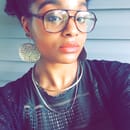It is interesting to know that a new skin tone is born every day, yet it is mind-boggling to think that it has taken years for beauty brands to take this into consideration when producing colour cosmetics. As of late, the beauty industry has started to make some great strides with this new era of inclusivity. From Rihanna releasing her Fenty Beauty line, offering an innovating range of 40 foundation shades considering women of all skin tones—albino women as well as women with darker complexions—to Cover Girl making James Charles, a YouTube beauty guru, the first male face of their brand, it is evident that the industry has taken some groundbreaking steps towards making diversification a priority in the development of new beauty products.
Although it is commendable that the beauty industry is finally starting to become a part of this important cultural conversation about diversity, it is important to raise the question of whether or not this conversation will continue to thrive and have a persisting effect on the beauty industry, or if it is just another trend for companies to increase revenues?
After the commercial success of Rihanna’s Fenty Beauty launch—grossing $100 million in sales in the first 40 days—other beauty brands started to pay attention to how consumers gravitated towards this idea of “inclusivity” and how this would be the game changer to making their brands more likable and profitable. The “Fenty effect,” as the industry is calling it, created a new standard for other beauty brands to adhere to.
Since early 2018, both prestigious and mass cosmetic companies have launched their own 40-shade foundation series, including Dior, which announced their new launch of “Dior Backstage” liquid foundations with 40 shades back in May, and Cover Girl, which launched their TruBlend Matte Made Liquid Foundation Lineup in June. This 40-shade range has started to be recognized as the “industry norm” and cosmetic brands are making it their mission to follow it.
“To not consider consumers skin tones or gender when it comes to producing and marketing cosmetics is to miss out on sales these days,” says Priya Rao of Glossy. Last year in the U.S. the colour cosmetics category was valued at $16.8 billion and was valued at $66 billion globally, according to an annual report given by Euromonitor. The growth in diverse demographics is the driving force for multicultural beauty and beauty brands are starting to pay attention due to consumer pushback and demand.
More companies are attempting to solve this lack of diversity issue within the cosmetic industry, but it is still questionable whether these brands are becoming a part of the movement with the ethical intent to be inclusive.
Ambika Gautam, partner and co-head of strategy at Wolf & Wilhemine, calls attention to this issue accentuating the fact that brands shouldn’t only be concerned with the “industry standard” of expanding their color range of foundations just to prove that they are contributing to the conversation about diversity. Gautam argues that customers will soon see through this charade. “Forty –plus shades are table stakes at this point. No consumer is going to say, ‘let’s pause and applause,’ just for this,” she said. Gautam says that there is a “deeper skepticism behind these brands intentions, especially bigger brands.”
Brands need to start considering ways in which they can take more of an ethical stance and make it apart of their cooperate social responsibility to be more inclusive instead of looking at this social issue as a way to increase sales within their business.
Aside from the lack of diversity in foundation shade ranges, the cosmetic industry has put forth little to no effort when it comes to the representation of an older demographic. Yes, make-up brands are starting to make great improvements towards being more inclusive in terms of race, culture, and attitudes, but there is still one missing element that these brands are overlooking. There are hardly ever any models over the age of 30 who are being represented in these brands advertisements. The models that are usually cast for these marketing campaigns are often not even over the age of 25.
In Nick Vaus’s article, “Why Make-up Brands Should Embrace The Older, Bolder Woman”, he says, “while make-up brands are rightly pushing inclusivity regarding skin tone and gender, there is one very large and lucrative group that’s still being ignored by mainstream colour cosmetics labels: women over 30. And, with older style leaders opting for bolder looks, why do brands insist on plugging the ‘tasteful’ and ‘age’ appropriate to everyone outside of the millennial and Gen Z bracket?”
Research done by Euromonitor International has shown that over the past few year’s consumers have gravitated towards skin health benefit claims more so than anti-aging claims, causing companies to feel like they need to use an appropriately aged woman as the face of their brand, which is not necessarily the case. Since skin care has evolved from being anti-ageing focused to placing more emphasis on health benefits, age shouldn’t be a factor when casting models. What should be emphasized is that all women no matter the age wants healthy, youthful looking skin. According to WGSN, 68% of women between the ages of 50-64 are working longer, living longer, and are spending their residual income on beauty and personal care and this number has continued to increase since 2011.
Although colour cosmetics has seen moderate growth in terms of expressivity and transparency, many trendy, fashion-driven colour and MUA brands seldomly include older faces on a consistent basis. Companies need to realize that by overlooking an entire age demographic they are missing out on an important customer base that would be more than likely to purchase from brands whose marketing uses women who look like them. When brands consistently and repeatedly use the same age group of women in their advertisements they are sending the message that only women of a certain age bracket should use this product or that this product is only effective if you are a part of this age group. Companies are not only missing out on major profits, but they are also neglecting the opportunity to show the versatility and the different dynamics that their brand has the potential to offer.
CoverGirl is one of the few brands that is taking advantage of this opportunity by featuring 70-year-old model and entrepreneur, Maye Musk as the newest face of their brand. Musk has been modeling for 50 years and has even appeared in campaigns for Revlon and Clinique. “Beauty truly is for women of all ages, and I can’t wait to take you all along this amazing journey with me!” says Musk.
Other brands such as MAC have made efforts to do collaborations with older MUA’s, celebrities, and models including the brands 54-year-old Director of Makeup Artistry, Romero Jennings who did a collaboration with 97-year-old style icon, Iris Afel, which immediately sold off the shelves. They also did a collaboration with 47-year-old actress Taraji P. Henson, which was quite successful as well. Aside from the sporadic collaborations here and there, MAC still fails to incorporate older women on a day-to-day basis.
The invisibility of older women in the cosmetic industry is a “reflection of the big social assumption that there’s a certain arc to all women’s lives; grow up, attract a man, become a mum, retreat into the background, become a grandma, dress in beige, vanish entirely.”
Many cosmetic companies brand initiatives and business strategies are transparently centered around self-expression, self-empowerment, uniqueness, and revolting against the limitations that are placed on gender and diversity. But it seems as if these interests only apply when they are exuded through a younger face. Those types of brands have yet to take on the challenge of representing the older or as Nick Vaus says, the (B)older woman. The more brands continue to improve upon their initiatives and strategies to focus on the entirety of a person and not just the individual features of them, the more women will be inclined to feel comfortable in their own skin in pursuit to put those obsolete social norms to rest.
While age hasn’t been much of a factor, the representation of gender diversity in the cosmetic industry is becoming the game changer for brands and many companies are starting to make it apart of their strategic priority.
In regard to gender neutrality, Fluide cosmetics is one brand that is building their business around inclusivity as part of their brand initiative. Fluide cosmetics is a line founded by Laura Kraber and Isabella Giancarlo who creates cosmetics with the intent of catering to gender fluid and gender-nonconforming communities. “The brand has made it its mission to bring sensibility into the beauty industry,” by using diverse models for the face of their brand as well as “naming their cosmetic line colors after iconic LGBTQ + locations,” according to an article by A + E Networks. Fluide also donates five percent of their profits to LGBTQ + organizations.
Thrive Causemetics is another beauty brand that is taking a different route when it comes to who they cater to: not underrepresented minorities, not gender-conforming people, but cancer patients. Karissa Bodnar, make-up artist and founder of Thrive Causemetics, founded Thrive in 2015 when her college friend died of cancer at the age of twenty-four. During her friend’s cancer treatment, Bodnar noticed that her friend’s eyebrows and eyelashes started to fall out, and this made her want to find a way in which she could create false lashes that didn’t’t require natural lashes to attach to. Bodner soon came up with the idea of cancer patient-friendly beauty products. Today Thrive Causemetics produces vegan, cruelty-free cosmetics that are safe for the use of women being treated for cancer.
As more inclusive cosmetic brands begin to enter into the market, consumers will begin to consider these company’s ethics instead of the expansion of foundation shade ranges. The brands that set out to jump on this “inclusivity bandwagon” by expanding their foundation shades are missing the bigger picture: the issue runs deeper beyond the surface of companies just appearing to be diverse in relation to how they exemplify themselves through their marketing strategies and product development.
Brands must prove their inclusivity values and be more transparent when it comes to how they support this movement. The cosmetic industry is in need of more brands like Fenty, CoverGirl, Fluide, and Thrive Causemetics who execute their brand’s initiatives with inclusivity at the forefront. Inclusivity should be the driving force behind beauty brands product development and marketing strategies.
The industry must also consider the idea that inclusivity is broad and covers more than just race, gender, and religion. There is a need for representation amongst the older demographic as well as a need for consumers with disabilities or special needs. These are all factors that cosmetic brands should take into account when developing and marketing new products because, after all, beauty is deeper than just the surface of people’s skin.



